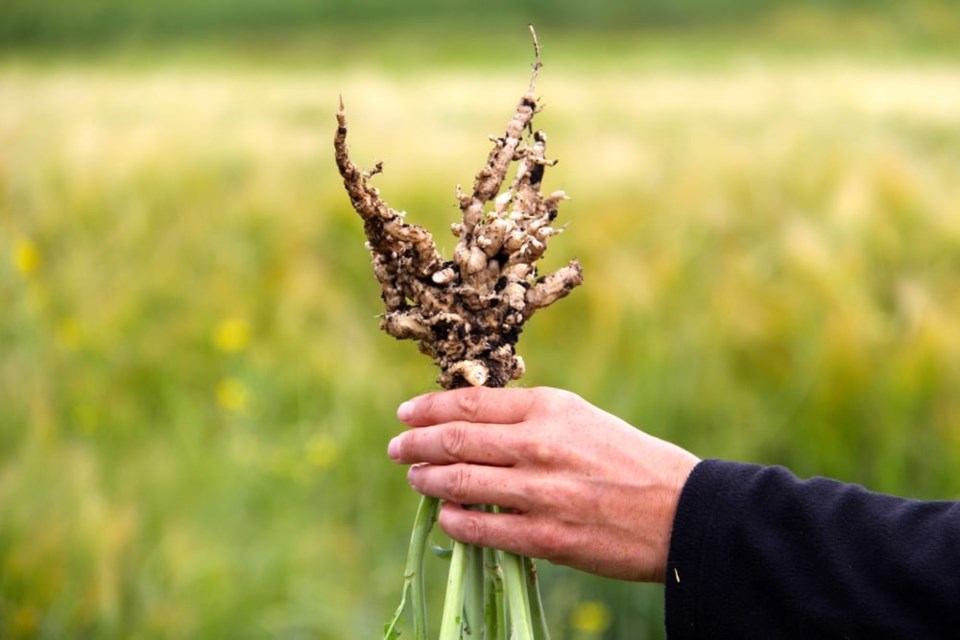There is a map online that defines the rural municipalities (RMs) where Clubroot has been identified within the province.
Clubroot is a soil-borne disease that can cause significant yield loss when pathogen levels are high, a susceptible crop is grown and when environmental conditions are favourable. Proactive clubroot management, a combination of rotation, resistant varieties and sanitation practices, is key to reducing possible yield losses due to clubroot.
The Ministry of Agriculture, in collaboration with SaskCanola, the Saskatchewan Crop Insurance Corporation and plant health officers, implemented the clubroot monitoring program to understand the distribution and severity of the disease in the province and where it has been already detected. The program includes in-field surveillance, free on-farm soil DNA testing for producers and agrologists and encouraging clubroot reporting from producers and industry.
The 2022 Saskatchewan Clubroot Distribution Map shows where Clubroot pathogens were detected in four fields and where clubroot symptoms were recorded in two other commercial canola fields. In 82 commercial fields, there were visible clubroot symptoms; clubroot pathogens were detected in 42 fields through DNA-based testing. These results show the importance of monitoring and managing clubroot, a declared pest under The Pest Control Act.
All producers with visible clubroot and the presence of pathogens within their fields have been notified. To protect the producer’s privacy, these specific locations are kept confidential and not been shared with the public. Only appropriate RMs are notified of land locations if there is specific clubroot bylaws that have been enacted and visible symptoms have been confirmed.
“Clubroot can impact our producers, landowners and the province’s strong canola market,” Agriculture Minister David Marit said. “This map helps the ministry to track and manage clubroot while preventing it from reaching other fields.”
In 2022, over 500 fields were inspected as part of the clubroot monitoring program. A free soil testing bag kit via the Ministry of Agriculture’s website or a regional office was provided to producers and industry agrologists. In total, 39 soil samples were submitted for laboratory analysis and SaskCanola covered the cost of each test.
SaskCanola funds province-wide disease testing for clubroot to ensure we have a good understanding of the regains where the disease is present. This way, canola growers can make the best management decisions for their farm to prevent the spread of this invasive soil-disease.
You can review the areas outlined in the 2022 Saskatchewan Clubroot Distribution Map found here.




